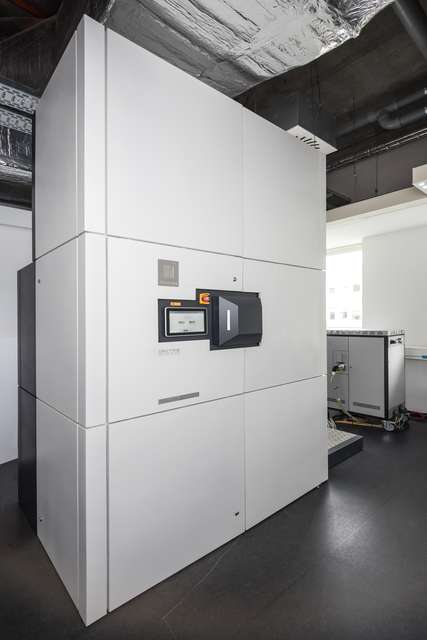Tescan Tensor STEM (Tescan Tensor)
Jülich
The Tescan Tensor STEM is an integrated analytical precession-assisted 4D-STEM instrument for multimodal characterization of nanoscale morphological, chemical, structural and crystallographic properties of a wide range of materials systems. It is equipped with a Schottky field emission electron source, fast electrostatic beam blanker (1 MHz) and precession unit (72 kHz), symmetrical window-less dual EDS detector (2 srad solid angle), and a hybrid-pixel direct electron detector (Dectris Quadro). The column is fully bakeable and can reach UHV condition after baking to eliminate specimen contamination during the measurements. The measurements are automated and further supported by near-real-time data analysis in the Tescan Explore software, while it is also possible to develop custom workflows using the Python-based Tescan ExpertPI library and to export the data compatible with third-party open-access software packages, such as LiberTEM, HyperSpy, py4DSTEM. This is the world’s first Tensor STEM system delivered to customers based on a beta collaboration program between the ER-C and Tescan Orsay Holding.
Sample Environment
The Tescan Tensor STEM currently only supports samples to be studied at room temperature but new specimen holders for cooling, heating, biasing, etc., are being considered for development.
Typical Applications and Limitations of Use
Typical applications:
BF and ADF STEM imaging
EDS composition analysis and elemental mapping
Precession-assisted crystallography orientation and phase mapping
Precession-assisted strain mapping
General (precession-assisted) 4D STEM measurements for virtual STEM imaging, differential phase contrast, ptychography, etc, which can optionally be acquired with EDS analysis simultaneously.
STEM image tomography (coming soon)
EDS tomography (coming soon)
3D electron diffraction (coming soon)
Limitations:
Currently the instrument is not suitable for atomic resolution imaging and doesn’t operate in magnetic-field-free condition.
Publications
Scanning Transmission Electron Microscopy Done Right
Van Der Wal D - Microscopy Today - 2023
Link: https://er-c.org/index.php/access/
